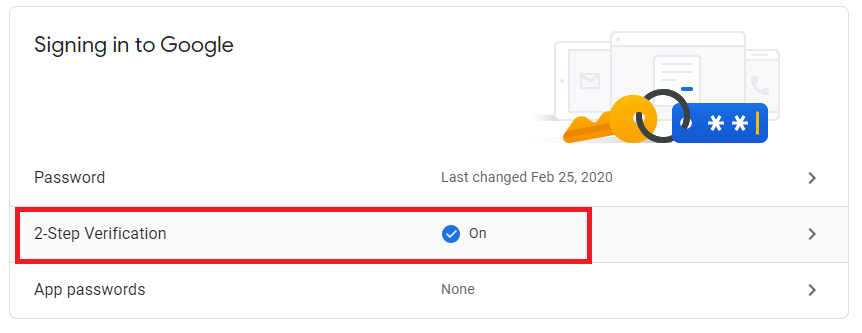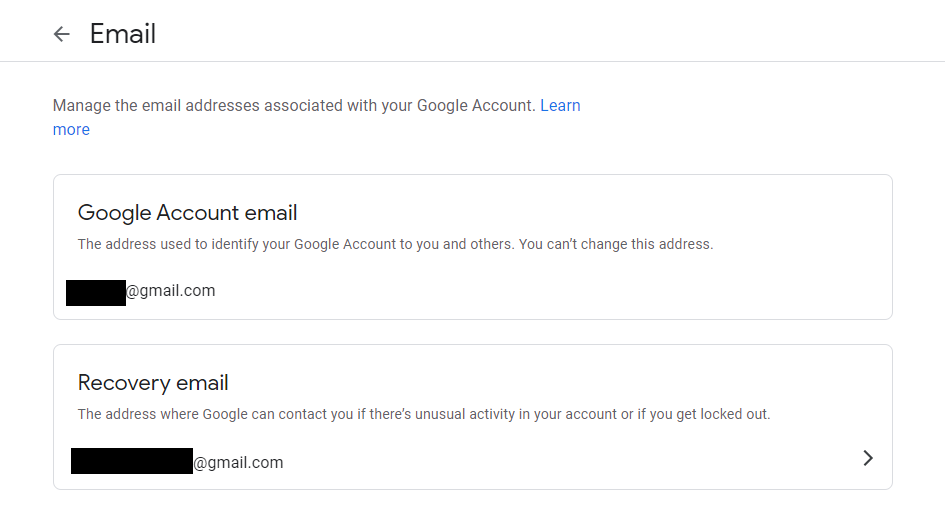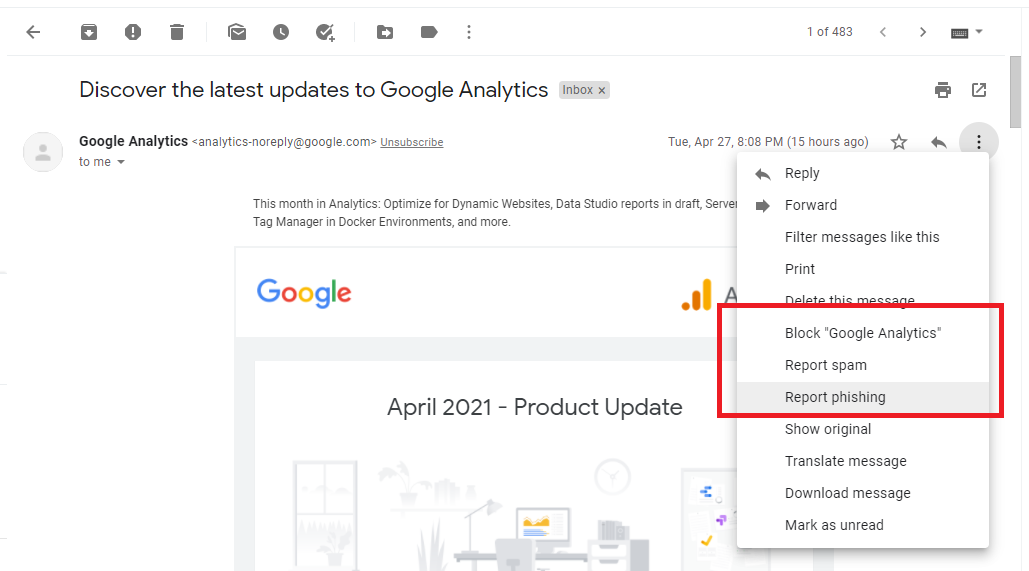How to Secure your Gmail Account in 2022? - Email Security Best Practices

Online scams are as old as the Internet itself and have evolved over the decades along with it. Hackers and cybercriminals are always trying new techniques to suck in and trick users into exposing their valuable personal information. Some of the most common hacker attempts revolve around breaching email services like Gmail.
Every couple of months, Google experiences some form of a large-scale hacker attack, and the situation was no different in 2021. Not to mention that hundreds, even thousands of people get their accounts breached daily. But, even though this is a worrying statistic, there are some things you can do to secure your Gmail account. Here are the best email security practices to employ in 2022 to ensure maximum Gmail account security.
How to Secure Your Gmail Account From Hackers?
Online threats and Gmail account breaches are no laughing matter, and Google takes them very seriously. For this reason, it has built a very robust security system that you can rely on to secure your account from email security threats.
This system relies on several facets you need to take care of and put in place. With that in mind, here’s everything you need to know about the five best ways to secure your Gmail account from hackers:
1. Use a Strong Password
It all starts with a strong password. Unfortunately, many online users often overlook the importance of a good password and opt for convenience over security. This is a very bad and potentially harmful practice. If you want to make sure your password is as strong as it can be, it’s best to follow the National Institute of Standard and Technology (NIST) password guidelines. Let’s take a closer look at the most important NIST password guidelines:
- Length Over Complexity - It’s commonly accepted that a complex password is significantly safer than one that’s not complex. However, results show that password length is much more significant than complexity. This is why NIST doesn’t recommend any password-complexity guidelines. Instead, it recommends using passwords of at least eight characters.
- No Periodic Resets - The idea behind periodic resents is to lock out unauthorized access to an account by requiring the user to reset their password every couple of months. In reality, this practice just complicates the user experience and increases the chances of a breach. It’s difficult enough to remember one strong password. So it’s always better to make that one password extra-strong than to change it up every once in a while.
- Don’t Use Password Hints - In today’s overexposed era of social media, most of us are sharing more than we realize. If you use a password hint an attacker can find by researching one of your social media profiles, you’re just making it easier for the hacker to get access to your account.
- Enable Two-Step Verification - Multi-factor authentication, also known as Two-factor authentication, is a very efficient identity verification method that allows you to secure the Gmail login process even better. This brings us to the next crucial security step.

2. Choose your two-factor authentication (2FA) method
Adding Two-step verification to your Google account is fairly simple and straightforward. The technology has come a long way over the past few years and is a must-have for all security-conscious Google users. There are several types of 2FA you can set in place to add security to your Gmail account. The most widespread ones are:
- Text Messaging - SMS verification has long been the industry standard for Two-factor verification. That said, this type of 2FA has become obsolete with time, as SMS messages can be intercepted through basic flaws and are not very secure overall, compared to other methods we’ll get to in a second.
- Google Prompts - There are two ways to use the Google Prompts feature. You can set it to use it with your phone instead of your password. Alternatively, you can select it as a 2FA method on top of the password. We must mention that Google Prompts can only be used on a mobile or tablet device.
- Authenticator App - There are many authenticator apps out there, but Google Authenticator is the best on the market. It’s simple, barebone, and relatively streamlined. Taking that into account, it poses the question - can Google authentication be hacked? If you’re worried about this, there’s only one 2FA method that can top it.
- Security Key - hardware keys are always the most secure option in terms of 2FA security. They are created with customization and user experience in mind, often combine multiple features and compatibility with different devices. For example, the one like Hideez Key can store and automatically enter your login credetials at the push of the button, generate one-time passwords and make the process two-factor verification seamless and intuitive.
3. Take Care of Your Google Account Recovery
Strong password and 2FA aside, you also need to have a system in place in case you have to recover your Google account. Having a good account recovery mechanism in place will allow you to safely regain access if you’ve forgotten your password or lost your mobile device. With this in mind, there are two critical aspects you should take care of:
- Phone and Email Recovery Setup - Registering a recovery mobile phone number and email address are a key precaution every Gmail user should take. It’s always a good idea to keep these recovery details up to date, especially when switching devices and emails.Recovery data will help you reset your password in case if you forget it or someone else will use your account.

4. Report Scams, Spam, and Phishing Attempts
Scams, phishing and pharming attcka are a common occurrence every one of us has likely come across, whether we realize it or not. Luckily, Gmail has antimalware, and phishing protection turned on by default, so there isn’t anything extra you can do to add protection to your account.
That said, some phishing scams and spam mail can get through from time to time. In such cases, the best thing you can do is report the attempt to Google and avoid interacting with the email in any other way.
To report a spam or phishing email, you first have to click on the drop-down arrow mark on the right side of the email. When prompted, you can choose either the “Report Spam” or “Report Phishing” option. This will automatically remove the email from your inbox and forward a report to Google to help it improve its defense against such attempts.

Bonus tip: How To Check Which Websites Sell Your Data?
Google includes a variety of nifty features and Gmail tricks you can use for your email account. One of the best ones is the one that allows you to check if any websites are selling or abusing your data. You can do so for any service or site you’re using.
If you want to check for this, type in the name of your Gmail address in the email field and a plus sign, and type in the name of the service you want to check. Finish the email address with the usual @gmail.com domain name.
For instance, if you’re checking Facebook, you can do so by typing the following formula: yournamesurname+facebook@gmail.com. If the site or service has shared any of your information with a third party, you’ll have everything directly in writing on your screen.
5. Enroll in the Google Advanced Protection Program
If you want to go a step beyond, you can take the ultimate action to enroll in Google’s new Advanced Protection Program. This new program implements exclusive security keys for your accounts, offering added protection from phishing attacks.
Unlike most security keys, which can be expensive and impractical, the Advanced Protection Program allows devices to have a built-in security key. This innovative program is currently available on both Android 7+ and iOS 10.0+ devices. Additionally, you’ll also need to purchase two security keys you’ll register with your account.
Is Gmail Secure in 2022?
The short answer to the question “how secure is Gmails” is - yes, it’s secure. The longer answer is - Gmail is still the top email service in the industry and does everything it can to secure its users from outside security threats. More importantly, it provides you, as the user, with handy tools and mechanisms you can employ to maximize your account security and protect yourself.
If you took the time to read through all of our tips, you now know more than most Gmail users. In case this page has left you with some unanswered questions or want to learn more about how we can help secure your valuable data, please contact us anytime.
Oleg Naumenko is the CEO and founder of Hideez. He specializes in passwordless authentication, FIDO2 keys, and access management solutions. With extensive experience in information security, Oleg helps organizations transition to passwordless, phishing-resistant workforce authentication.




